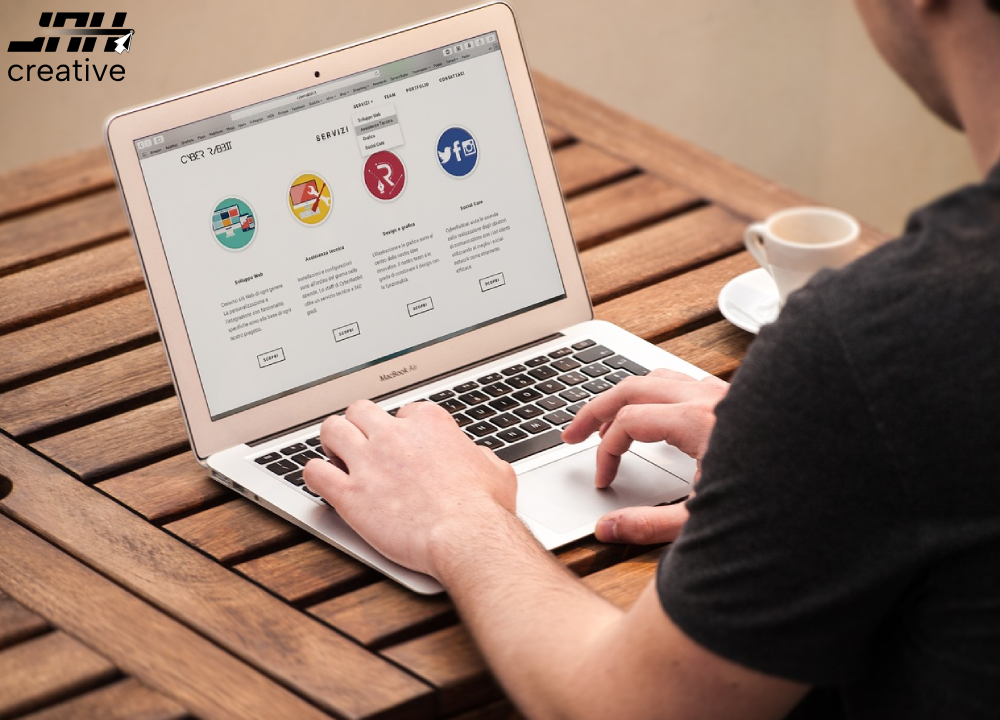User Experience (UX) and User Interface (UI) design are important components in developing effective and user-friendly apps and website design. These two important components UX and UI Design are compulsory and sometimes create confusion among UI UX designer and client in terms of meaning and role. In this detailed guide at Jah Creative, we will look at what’s the difference between UX UI design and their impact on user experience.
What is UX Design
User Experience (UX) Design is a detailed strategy that aims to improve the entire satisfaction of users getting from the product or service. It includes several components such as usability, accessibility, performance, attractive design, and overall user happiness. UX designers try to provide a seamless engaging experience and consider all those points that users can face during their experience with a product or service.
Key Features of UX Design
User Research
- Regulating user discussion, surveys, reviews, and usability tests to better understand user demands and preferences.
- Examining user demographics, behaviors, and motivations.
Information Building
- Content structure and establishment to ensure a logical instinctive user experience.
- Creating wireframes and prototypes to help visualize information flow.
Design Interaction
- Design interactive elements such as buttons, forms, and navigation menus.
- Make sure stability in interactions throughout the entire product.
Usability Testing
- Gather feedback from real users to locate potential problems and areas for improvement.
- Repetitive design developing base of user testing findings.
Accessibility
- Make sure that the product is usable by people with different abilities and limitations.
- Meet accessibility standards and guidelines.
What is UI Design
User Interface (UI) design is a subcategory of UX design that focuses on a product’s visual and interactive features. It is concerned with designing a beautiful and user-friendly interface that is consistent with the overall user experience purpose.
Key Features of UI Design
Visual Design
- Choosing the color schemes, typography, and artwork to create an eye-catching interface.
- Maintaining visual consistency throughout the product.
Typography
- Choose appropriate fonts for readability and display.
- Ensure consistency in font styles and sizes.
Iconography
- Designing icons that convey meaning and help the user to understand.
- Using consistent iconography to create reasonable visual speech.
Layout Design
- Organizing elements on the screen in a simple and user-friendly layout.
- Developing responsive designs for various devices and screen sizes.
Prototyping
- Creating interactive prototypes that show how the final product will appear and observe.
- Prototyping allows you to test and clear your visual design.
The Interaction For UI Vs UX
While UX and UI Design are independent elements that are supporting and working together to create a consistent user experience. The link between the two can be puzzling because UX provides the general framework and UI adds visual details that improve the user’s interaction.
Collaboration and Communication
Collaboration
- UX designer and UI designer must work closely together to align their aims and create a unified design.
- Regular communication and feedback help to improve the user experience and the interface UI/UX designs.
Goals Sharing
- Both UX and UI designers aim to create products that meet the needs and expectations of their users.
- Understanding one other’s perspectives to encourage collaboration.
Repeated Process
- The UX and UI design process is repeated with UI feedback influencing UX decisions and vice versa.
- Continuous clarification guarantees balanced and user-friendly results.

FAQs About UX and UI Design
What is a UX Designer? And What Does a UX Designer Do?
A UX designer, also known as a user experience designer, is a professional person that creates a digital interface that highlights user happiness, usability, and overall interaction. This includes tasks such as user research, wireframing, prototyping, and collaborating with cross-functional teams to create seamless and effective digital experiences.
What is a UI Designer?
A UI designer, also known as a user interface designer, is a skilled professional who designs the visual elements and interactive features of digital interfaces such as buttons, icons, and navigation components.
What is a UI UX Design?
UI&UX, or user interface / user experience meaning a design specialty that focuses on building an inbuilt visually attractive interface (UI) and a seamless interaction (UX) for users when they interact with digital products or services.
What is User Interaction Design?
User Interaction Design is concerned about generating meaningful and engaging interactions between users and digital products or services. It requires numerous touchpoints where users engage with a system and get a smooth and user-friendly experience.
What Does UI Stand For?
UI stands for “User Interface,” which refers to the visual elements and design components of a software or digital product.
What Comes First UI or UX?
In the UX and UI design process, UX (User Experience) often comes before UI (User Interfaces) because it requires researching, planning, and establishing the whole user journey and functionality.
Can one person be a UX and UI designer?
Yes, the designers who did UX and UI design work are referred to as a “UX/UI designer.” However, big projects may require specialized positions to assure a more in-depth attention to each area.
How does UX/UI design impact the success of a product or service?
The success of a product or service is completely related to the UX and UI Design. A positive user experience boosts customer satisfaction and retention, which contributes to the product’s success.
Is UX design more important than UI design?
Both elements are equally important. A visually amazing UI design attracts consumers, but poor user experience can affect bounce rates. A successful product or service requires a seamless integration of UX and UI design.
How does mobile responsiveness impact UX and UI design?
Mobile responsiveness is an important part of both UX and UI design. UX designers maintain a consistent user experience across several devices, whereas UI designers build responsive layouts and designs that adjust to varied screen sizes.
What tools are commonly used in UX and UI design?
UX Design Tools
- Sketch
- Adobe XD
- Figma
- InVision
- Axure RP
UI Design Tools
- Adobe Illustrator
- Sketch
- Figma
- InVision
- Zeplin
How can UX/UI design be successful?
The success of UX/UI design is measured using a variety of metrics including user satisfaction, task success rate, conversion rates, and usability test results. Analytics tools provide useful information about user behavior and the efficacy of UI/UX design decisions.
Can a visually attractive design help to improve poor user experience?
A visually stunning UX and UI design attracts users. But a bad user experience causes irritation and disappointment. Users are likely to leave a product or service that does not match their functional requirements.
How often should design repetition be done?
UI / UX Design revisions should take place on a regular basis throughout the development process. Continuous feedback from users, stakeholders, and team members helps to identify areas for development and ensure the final product meets or exceeds user expectations.
The Impact on User Experience
Positive User Experience
Increased User Satisfaction
- A perfect UX & UI design improves user satisfaction.
- Users like services that are simple to use and visually appealing.
Higher User Retention
- Positive user experiences encourage users to interact with a product.
- Retained users are more likely to become repeat clients.
Positive Brand Appreciation
- A seamless and engaging experience helps to build positive brand awareness.
- Users are more likely to refer the product to others.
Negative User Experience
High Bounce Rates
- Poor UX/UI design leads to high bounce rates. Because users quickly leave the irritating interface.
- First impressions are important, and a horrible experience can discourage people from exploring further.
Low Conversion Rates
- Users are unable to complete required actions when engaging with complicated or confusing interfaces.
- Low conversion rates can have an impact on the performance of e-commerce platforms and other websites.
Negative Reviews
- Users who had a horrible experience are more inclined to express their unhappiness.
- Negative reviews can have an opposing impact on a product or service’s reputation.
Conclusion
To sum up, understanding the difference between UI and UX design is important for developing digital products that interact with users. While UX design focuses on the user experience and happiness, UI design improves the visual and interactive components of the interface. The collaboration of these two elements is vital for creating a good and functional design.
Successful digital products focus user demands, generate seamless interactions, and have visually appealing interfaces. By adapting both UI and UX design concepts, designers may contribute to a product’s overall success, resulting in satisfied users and great brand experiences.



